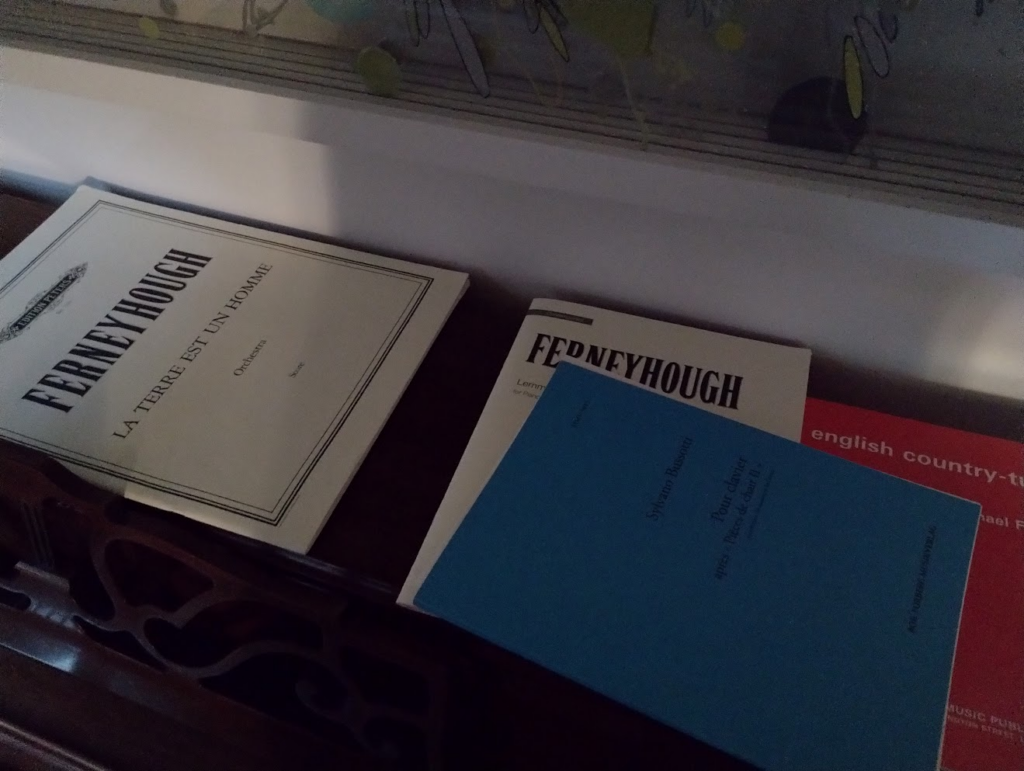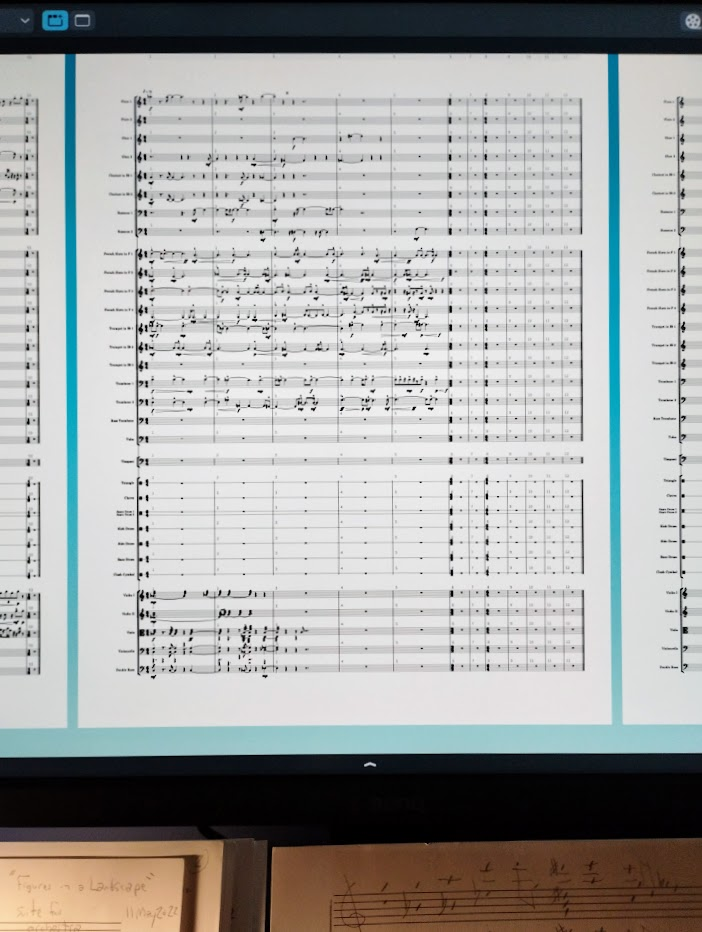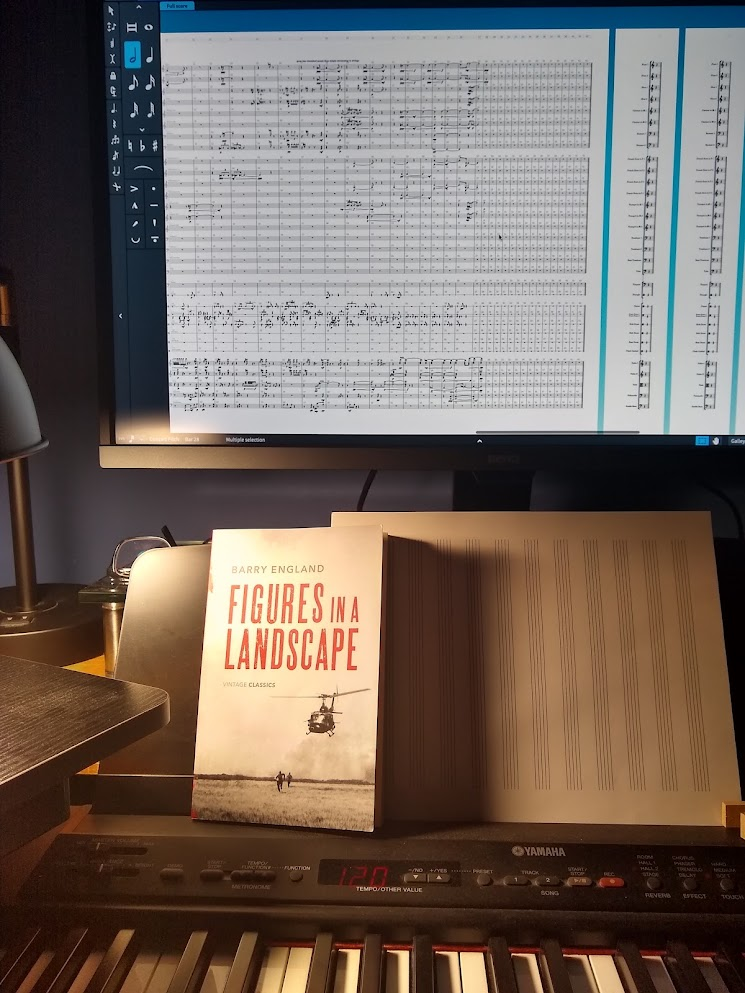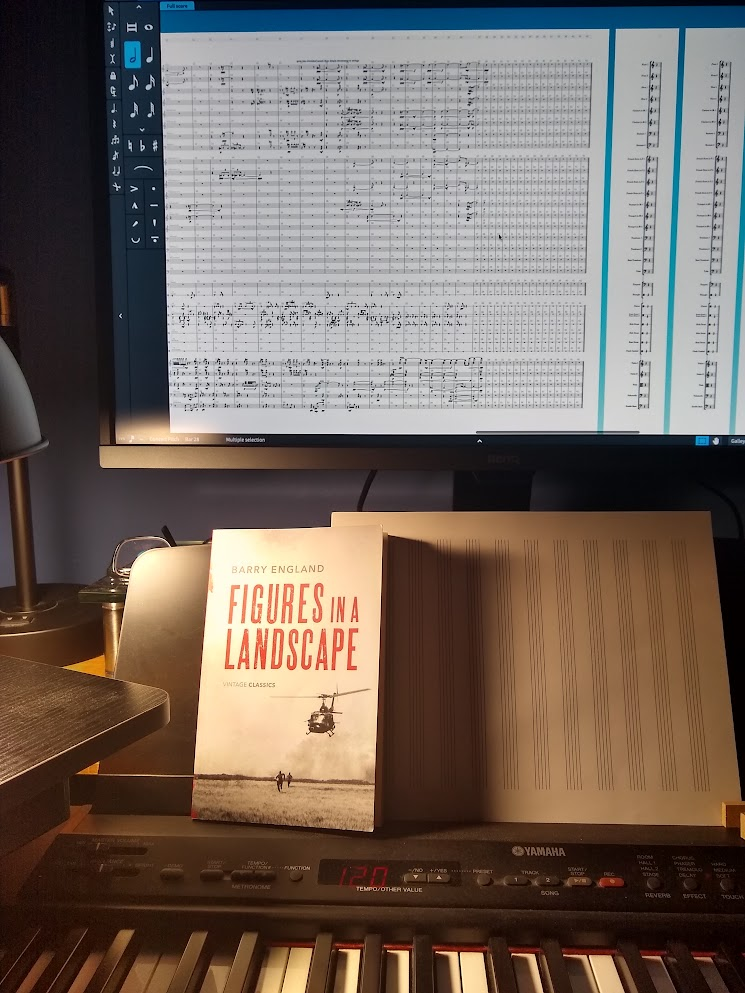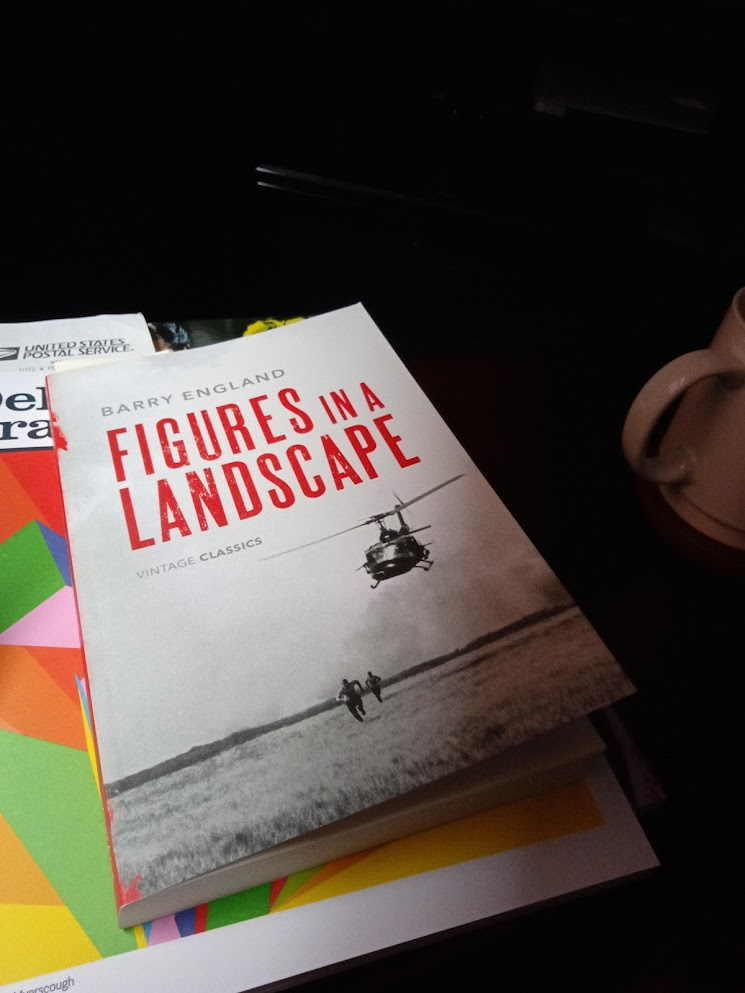A couple of years back I purchased the score for Finnissy’s piano collection English Country-Tunes, a beautiful score and equally arresting music. The first time I listened to it it deeply terrified me. Following that, and following along with the New Complexity composers, I purchased Ferneyhough’s Lemma-Icon-Epigram. Another stunning piano work. (And one, equally, I’d never be able to play.) Since then I’ve purchase a couple of other beautiful modern scores.
